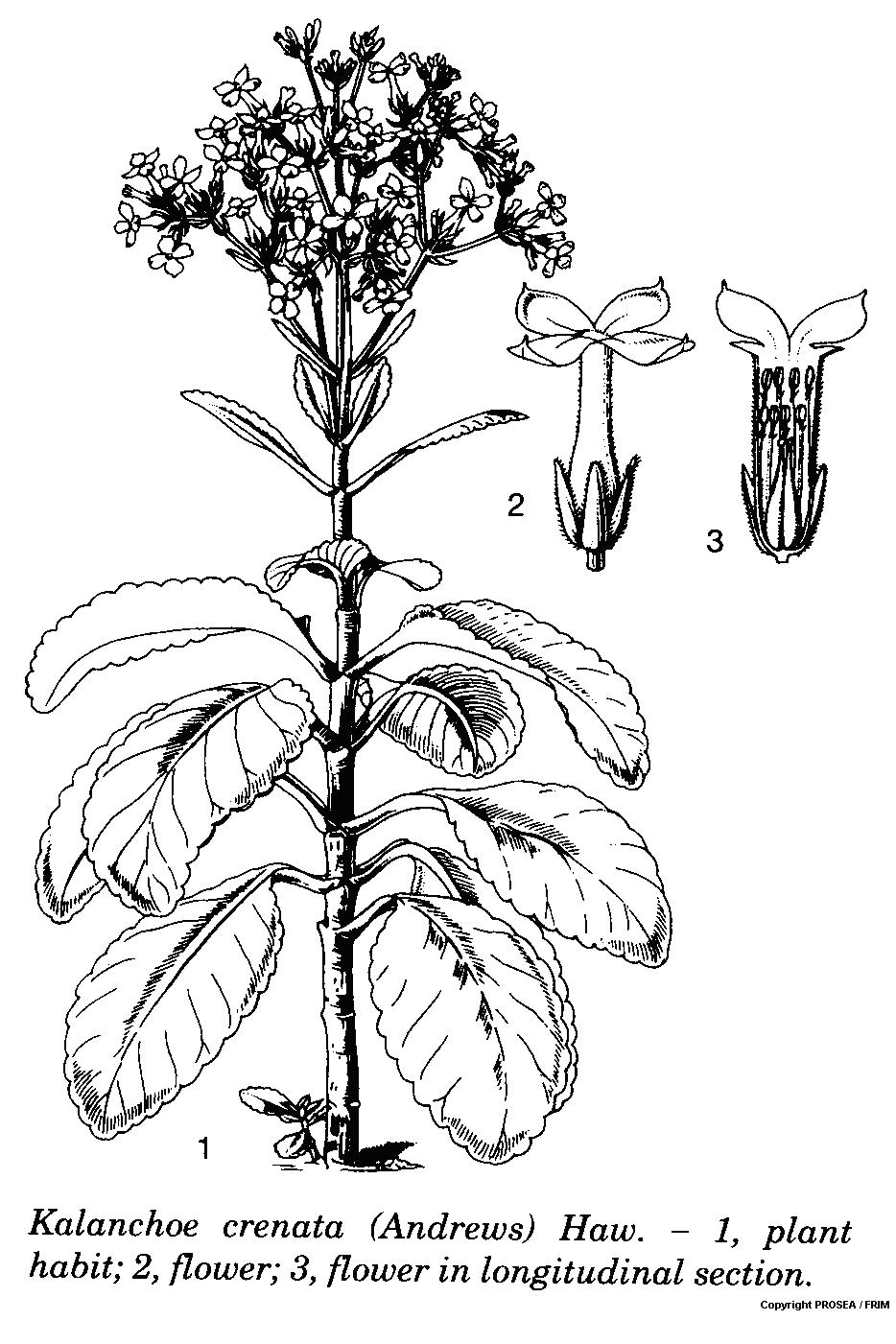Kalanchoe crenata (Andrews) Haw.
Family
Crassulaceae
Synonyms
Cotyledon crenata (Andrews) Vent., Kalanchoe spathulata DC., Kalanchoe integra auct. non (Medic.) O. Kuntze.
Vernacular Names
| Indonesia | Kayu urip (Javanese), buntiris (Sundanese), tampu taura (Southern Sulawesi). |
| Thailand | Kong saamyaan, thong saamyaan (Central). |
| Vietnam | Tr[uw] [owf]ng sinh l[as] to. |
Geographical Distributions
Kalanchoe crenata is probably native to tropical and South Africa, naturalised in Brazil, South and South-East Asia. In Java, it is mostly found in the east, on the hot and dry eastern slopes of the mountains.
Description
Kalanchoe crenata is an erect or ascending shrub that can grow up to 30-200 cm tall. It is usually unbranched, with a strong taproot and with cylindrical or obtusely quadrangular stems.
The leaves are ovate or obovate-oblong to spoon-shaped, measuring 4-30 cm x 2.5-20 cm, with wedge-shaped base, obtuse at apex, thickly coriaceous, with crenate margins, pale green, glaucous or variably tinged with purple and with petiole.
The inflorescence is up to 30 cm long. The flowers are with sepal lobes, measuring 4-12 mm x 3-4 mm and acute to attenuate. The petal tube is 8-16 mm long, distinctly widened downwards, and (orange-)yellow above the greenish base while the petal lobes are oblong-Iance-shaped to elliptical, measuring (4-)8-12 mm x (2-)3-4(-5) mm, patent or subreflexed, erect after anthesis and twisted together and mucronate. The anthers are either all included or slightly exserted for those of the upper series. The smooth carpels are free or sub connate at the base.
Ecology / Cultivation
Kalanchoe crenata is a very variable, and widespread species known under a multitude of synonyms. It can be found in a wide range of open, dry, stony habitats up to 2000 m altitude, sometimes abundant in light Casuarina forests.
Line Drawing / Photograph
References
1. Plant Resources of South-East Asia No. 12(1): Medicinal and poisonous plants 1.



